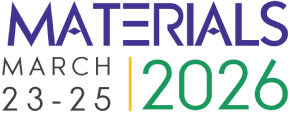Title : Fume hazard during laser and hybrid welding of stainless steel
Abstract:
Due to their properties, stainless steels are used in many industrial branches, e.g. power, chemical, petrochemical, automotive and food industries. The main joining methods of these materials are gas shielded arc welding processes – (MIG/MAG and TIG). However, in recent years, the application of laser and hybrid laser arc welding techniques for joining stainless steels has been more and more popular.
Welding processes are associated with the welding fume emission into the work environment, what influences negatively on health. According to International Agency for Research on Cancer (IARC) guidelines since 2017 welding fume has been classified as carcinogenic factor to humans (Group 1).
Therefore, the application of welding technologies in the industry is connected with the necessity for research conducting and determination of work safety and health protection conditions.
The assessment of the risk related to exposure to welding fume depends on the amount of fume generated, its chemical and phase composition and morphology. The combined analysis of these factors is decisive on the toxicity of fume and its impact on the human health.
The amount of fume generated depends on the welding method, the type of base and filler materials and the technological parameters. The chemical composition of fume is determined by the grade of welded material and filler metal. The next step is to conduct an analysis of the phase composition of welding fume in order to determine in which form a given element occurs. In turn, the size of welding fume particles determines the depth of their penetration into the human body, there is an inverse relationship - the smaller the particles, the deeper they penetrate into the human body.
This presentation is focused on the first step - the assessment of fume emission rate. Research of fume emission rate was carried out during laser and hybrid welding of stainless steel in grade 1.4301 (X5CrNi18-10). The obtained results showed the influence of the technological parameters of the process on emission rate, what allows for the modification of the process in the environmental aspect.
Audience take away:
- The audience will able to learn about the hazard connected with welding fume emission.
- The complex analysis of welding fume hazard will allow for welding process selection which is characterized by lower risk in terms of welding fume emission.
- Obtained results will be useful for welding personnel in industrial branches connected with stainless steels joining.



